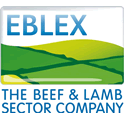| 30/04/07
Despite a marked slowing of trade in the second half of the year,
the latest figures from the English Beef and Lamb Executive (EBLEX)
reveal that national sheep meat exports continued their recent annual
growth in 2006.
Up by just over 2% on 2005 at 87,000 tonnes, annual exports edged
towards the 99,000 tonne peak recorded in 2000 before the FMD-related
ban brought the trade to an abrupt halt. Reflecting the improved
conditions of the first half of the year in particular, the annual
value of exports rose by almost 8% to £230 million.
The annual improvement was, however, entirely due the to the strength
of the trade over the first six months of 2006, favourable market
conditions and a good availability of lambs resulting in a 16% increase
in exports compared with the same half-year period in 2005.
In contrast, export volumes in the second half of the year were 7%
down on 2005. This was a consequence of a steady increase in the
strength of sterling against the euro, as well as increasingly difficult
economic conditions in the main continental markets.
While still only relatively small, the proportion of exports in the
form of value-added cuts rather than carcases rose encouragingly
to 14.4% compared to the 7-8% in 2000. Trade to France accounted
for 70% of total exports as against a historic 75%, suggesting a
welcome diversification of markets. This is confirmed by annual export
volume gains of 7% and 10% achieved on the Belgian and Italian markets
respectively versus just 0.3% in France.
Even so, with 30% of UK lambs now being exported and the bulk of
these continuing to go to France, the French trade clearly has a
major influence on the home market. In this context, it is not surprising
that the particularly disappointing prices realised towards the end
of last year coincided with year-on-year declines of 20% or more
in monthly exports to France.
Nor is the solution necessarily for more lambs to be held over until
the New Year, as appears to be the case again this season. Since
the first quarter of the year is traditionally a relatively flat
time for exports, more lambs on the domestic market only tends to
put pressure on prices.
Although exporting conditions remain challenging, 2007 exports are
forecast to be at a similar level to last year. This will, however,
depend upon the state of the French economy, the sterling:euro exchange
rate and competition from other exporters – most notably New
Zealand.
The availability of English lambs will also continue to be a major
factor, with sufficient supplies at the peak of the exporting season
in the autumn/early winter critical to maintaining volumes. Retaining
such a traditional seasonality of marketing will be valuable in limiting
the potential knock-on effect of a overhang of old season lambs onto
the new season market.
 Longtown Primestock Sale - 26th April 2007 Longtown Primestock Sale - 26th April 2007
 Offal Market Opportunities Offal Market Opportunities
 Scottish
Sheep Event to Benefit All Scottish
Sheep Event to Benefit All |


